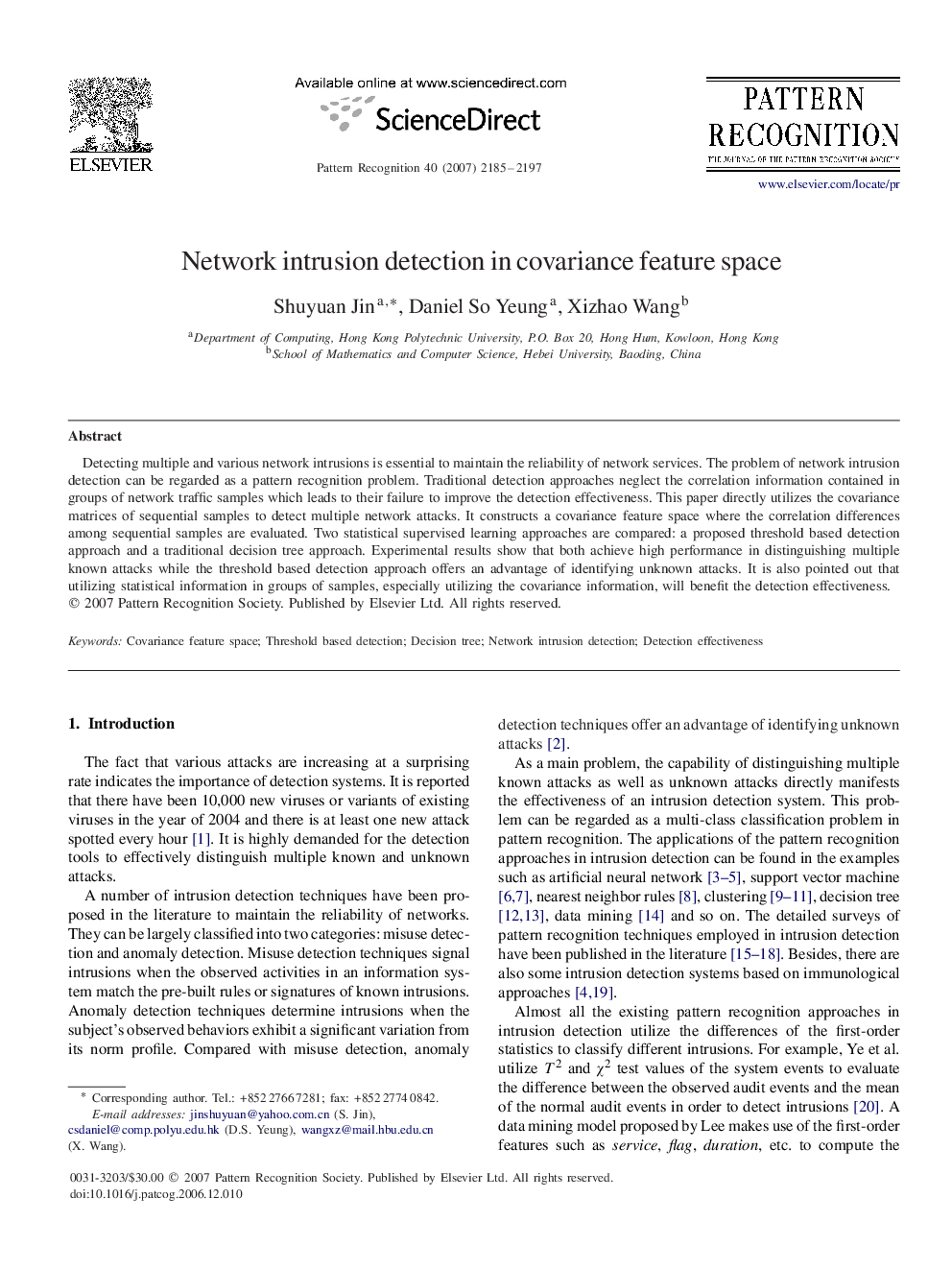| Article ID | Journal | Published Year | Pages | File Type |
|---|---|---|---|---|
| 530877 | Pattern Recognition | 2007 | 13 Pages |
Detecting multiple and various network intrusions is essential to maintain the reliability of network services. The problem of network intrusion detection can be regarded as a pattern recognition problem. Traditional detection approaches neglect the correlation information contained in groups of network traffic samples which leads to their failure to improve the detection effectiveness. This paper directly utilizes the covariance matrices of sequential samples to detect multiple network attacks. It constructs a covariance feature space where the correlation differences among sequential samples are evaluated. Two statistical supervised learning approaches are compared: a proposed threshold based detection approach and a traditional decision tree approach. Experimental results show that both achieve high performance in distinguishing multiple known attacks while the threshold based detection approach offers an advantage of identifying unknown attacks. It is also pointed out that utilizing statistical information in groups of samples, especially utilizing the covariance information, will benefit the detection effectiveness.
